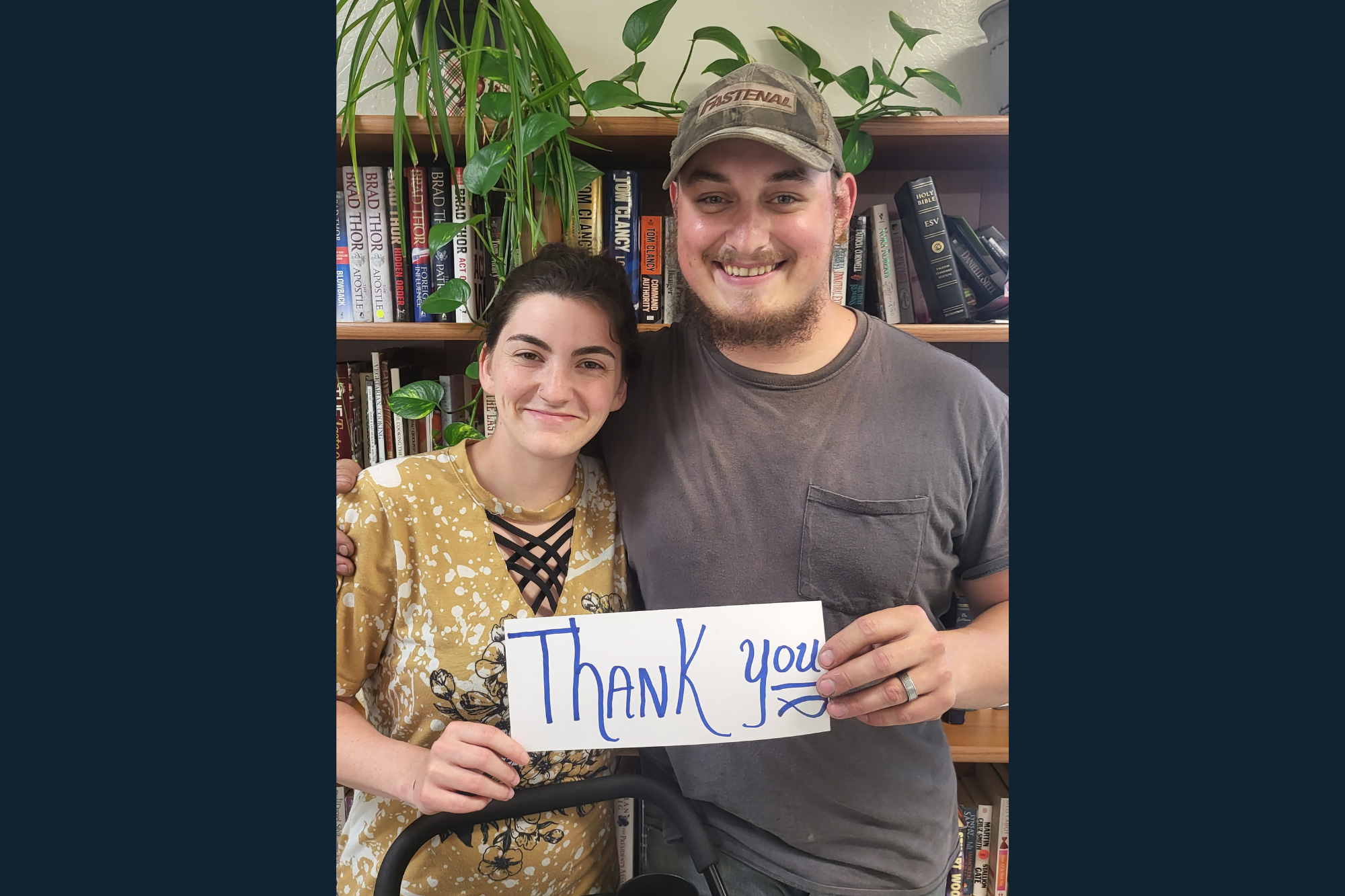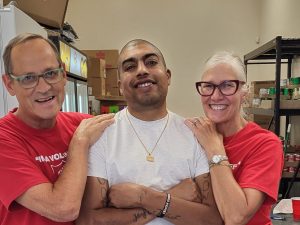The Medford (Oregon) Salvation Army runs Hope House, a transitional living program.
There’s no place like home. Aiden and Amy Burlison experienced that truth in 2020, when they lost their jobs—and their apartment—during the pandemic. It was a blow for the couple; their son Ethan was only 1 year old. They had been looking forward to raising him in Central Point, a small town in Oregon’s Rogue Valley—their hometown.
The young family joined the ranks of what’s been called “the hidden homeless,” those who, while never living on the streets, find shelter by couch surfing. The National Coalition for the Homeless estimates that 1.65 percent of the United States population is couch-homeless.
The Burlisons were able to stay with family for a while; then, at a friend’s suggestion, they tried starting a new life in Utah, but it wasn’t for them.
“Being from here [Central Point], living in Utah was too big,” Amy Burlison said. “It was too much.”
Homesick, they came back to Oregon. There, they connected with the Medford Salvation Army’s Hope House, where they found the resources they needed to rebuild their life. A drug and alcohol free transitional living facility, Hope House can accommodate up to 95 individuals, including not only single men and women but also families.
Amy Burlison said she knew nothing about The Salvation Army before her experience at Hope House.
“I didn’t know they offered transitional living help,” she said. “I just thought it was the thrift store, and then the bellringing at Christmas time.”
In Jackson County, the money collected at those red kettles funds The Salvation Army’s programs and services there, including Hope House.
“Families of all shapes and sizes come seeking assistance,” said Major Jonnette Mulch, Medford Corps Office and Jackson County Coordinator. “Many of the families we see are looking at just getting back on their feet, staying clean and sober, reunification with children, securing employment and permanent housing.”
For the Burlisons, it was all about employment and housing. Amy Burlison said they applied at Hope House March 9, interviewed there on March 10 and moved in that same day.
“They wanted to get us in pretty quick because they knew we had Ethan,” she said. “They have a family dorm; there’s six rooms in there for people with children or couples, and then they have a single male’s dorm and a single women’s dorm. And they also have studios and regular apartments for people.”
“If you’re struggling, you can talk to them, and they can give you resources…And she helped me get into therapy, which was awesome. And then they’re just cheerleaders for people. They push you to be better.” — Amy Burlison
Hope House was a good fit for the Burlisons, who worked with their life skills support manager to achieve specific goals.
“Within the first 30 days, all the adults are required to have a job,” Burlison said. “I think it was three or four days in, and Aiden got a job. They knew it was hard for me to find daycare, so they gave me a little bit longer, which was really nice. But I would volunteer around the facility.”
She said she did anything that was needed: cleaning empty rooms in preparation for new people or helping with groundskeeping.
Burlison gives lots of credit to their life skills support manager. Initially they met with her twice a week, and then toward the end of their stay, every two weeks. She’d review their budget and make sure they were saving money.
“And they’re also there if you’re going through a hard time,” she said. “If you’re struggling, you can talk to them, and they can give you resources…And she helped me get into therapy, which was awesome. And then they’re just cheerleaders for people. They push you to be better.”
Mulch said she watched the Burlisons confidence grow as they progressed through the program. Hope House got them back on track and into their own home by October, just seven months after their arrival. Participants can stay for up to two years, as Hope House works to help them secure permanent housing.
“[The Burlisons] were able to secure full-time employment, save money and work toward buying a car,” Mulch said. “Amy was able to work through many challenges…Her confidence grew and she was able to be a great support to many other participants.”
Mulch said Amy Burlison became a chair member of the Participants’ Council.
“This gave her even more of a voice and continued to build her confidence,” she said. “She discovered she is a strong leader and took her responsibility very seriously.”
Mulch said Hope House isn’t for everyone—not all who apply are willing to do the work. Some don’t wish to abide by community standards, like the 8 p.m. curfew that exists until people have lived there for a while—then it’s 10 p.m.
“Our facility is not simply housing,” she said. “It is a program that helps to teach basic life skills, such as keeping your room clean, budgeting, hygiene, etc. We have some basic community chores where each participant is assigned a task…Some folks don’t want to abide by the curfew, don’t want to do chores, don’t want to meet with caseworkers, don’t want to get a job, keep their room clean, take a bath, seek housing or stay sober.”
Hope House directs those individuals to other facilities that may be able to help. But for those who stay, like Burlison, the Hope House community can become a family.
“Ethan [now 3 ½] had so much fun,” Burlison said. “He loves everyone that lives there. And they adored him. There was a little playground…and also an open field where I could just let him run around, and he could play basketball. And they had a splash pad for the kids.”
And that’s just the start—Mulch said Hope House participants are invited to all the Medford Corps (church) activities.
“We try to plant the seeds and let them know they are always welcome to join us,” she said. “Hope House invites past participants to come and share with current participants to give support and encouragement. It is good for both sides.”
Now, after several years of uncertainty, the Burlisons will enjoy the holiday season in their own apartment in Central Point, just a few miles from Medford. Burlison said it’s quiet there and safe for children, which she likes. She said she’s already signed up to help with The Salvation Army’s Angel Tree toy distribution.
Her goals are clear.
“I want to finish school and then go get a big girl job and start saving money so we can pay off our debt and buy a house,” she said.
It’s about achieving the American dream—building a secure future, providing for one’s family.
Do Good:
- See how The Salvation Army fights homelessness.
- You’ve probably seen the red kettles and thrift stores, and while we’re rightfully well known for both…The Salvation Army is so much more than red kettles and thrift stores. So who are we? What do we do? Where? Right this way for Salvation Army 101.












